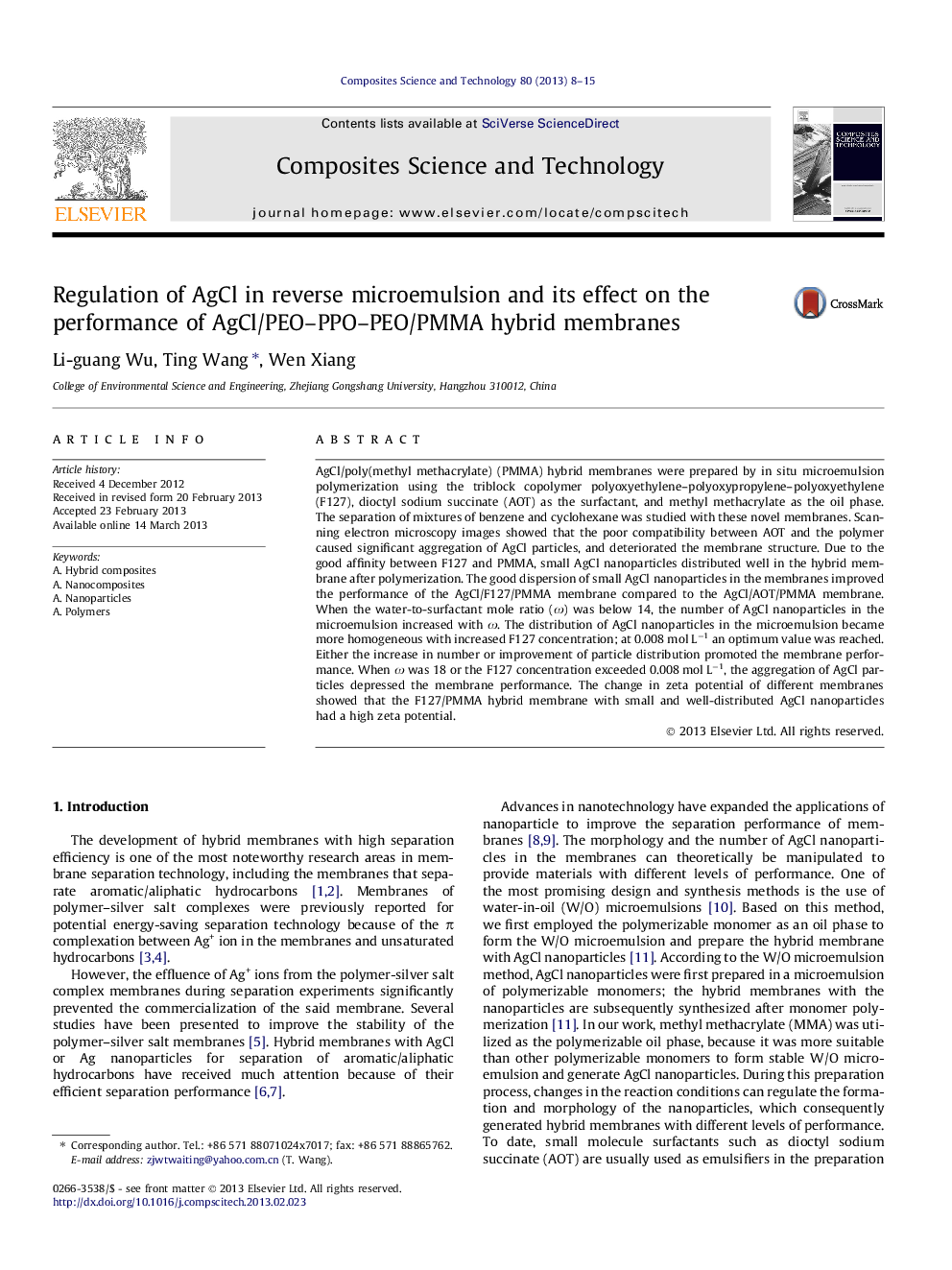| Article ID | Journal | Published Year | Pages | File Type |
|---|---|---|---|---|
| 7215982 | Composites Science and Technology | 2013 | 8 Pages |
Abstract
AgCl/poly(methyl methacrylate) (PMMA) hybrid membranes were prepared by in situ microemulsion polymerization using the triblock copolymer polyoxyethylene-polyoxypropylene-polyoxyethylene (F127), dioctyl sodium succinate (AOT) as the surfactant, and methyl methacrylate as the oil phase. The separation of mixtures of benzene and cyclohexane was studied with these novel membranes. Scanning electron microscopy images showed that the poor compatibility between AOT and the polymer caused significant aggregation of AgCl particles, and deteriorated the membrane structure. Due to the good affinity between F127 and PMMA, small AgCl nanoparticles distributed well in the hybrid membrane after polymerization. The good dispersion of small AgCl nanoparticles in the membranes improved the performance of the AgCl/F127/PMMA membrane compared to the AgCl/AOT/PMMA membrane. When the water-to-surfactant mole ratio (Ï) was below 14, the number of AgCl nanoparticles in the microemulsion increased with Ï. The distribution of AgCl nanoparticles in the microemulsion became more homogeneous with increased F127 concentration; at 0.008 mol Lâ1 an optimum value was reached. Either the increase in number or improvement of particle distribution promoted the membrane performance. When Ï was 18 or the F127 concentration exceeded 0.008 mol Lâ1, the aggregation of AgCl particles depressed the membrane performance. The change in zeta potential of different membranes showed that the F127/PMMA hybrid membrane with small and well-distributed AgCl nanoparticles had a high zeta potential.
Related Topics
Physical Sciences and Engineering
Engineering
Engineering (General)
Authors
Li-guang Wu, Ting Wang, Wen Xiang,
